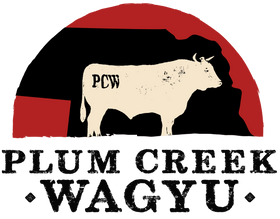Corn silage is an essential component of many cattle feeding programs, and it offers significant benefits when used in the diet of Wagyu cattle. As a rich source of energy and fiber, corn silage helps promote optimal growth and enhances the marbling of the meat, which is a signature characteristic of Wagyu beef.
1. High Energy Content Corn silage is energy-dense, providing the necessary calories for Wagyu cattle to grow at a steady rate. The high carbohydrate content in corn silage supports the development of intramuscular fat, also known as marbling. This marbling is what gives Wagyu beef its renowned tenderness and rich flavor.
2. Improved Digestive Health The fiber content in corn silage aids in maintaining healthy digestion in Wagyu cattle. A well-functioning digestive system ensures that the cattle can efficiently utilize the nutrients in their feed, leading to better overall health and more consistent weight gain.
3. Cost-Effective Feed Source Corn silage is not only nutritionally beneficial but also cost-effective. It allows farmers to make the most of their resources by providing a substantial amount of feed per acre. This efficiency is particularly important in the long-term feeding programs required for raising Wagyu cattle, which often extend beyond that of other breeds to achieve the desired marbling.
4. Consistent Quality When properly stored and managed, corn silage provides a consistent quality feed source throughout the year. This consistency is crucial for Wagyu cattle, as fluctuations in diet can impact the uniformity of marbling and overall meat quality. With corn silage, farmers can ensure that their cattle receive a steady supply of high-quality nutrition.
5. Environmental Benefits Using corn silage as part of a Wagyu feeding program can also have environmental benefits. Corn silage production makes use of the entire corn plant, reducing waste and promoting sustainable farming practices. Additionally, the efficient use of land resources helps minimize the environmental footprint of cattle farming.
Incorporating corn silage into the diet of Wagyu cattle is a strategic choice that supports the production of premium beef. Its high energy content, digestive health benefits, cost-effectiveness, and consistency all contribute to the superior quality of Wagyu beef, making it a valuable component of any Wagyu feeding regimen.
Related Posts
10 Quick and Easy Wagyu Beef Recipes for Busy Weeknights
From Ranch to Plate: Understanding the Wagyu Beef Supply Chain
Wagyu for Every Occasion: Perfect Cuts for Different Events
Sustainability in Wagyu Ranching: Our Commitment to the Environment
Pairing Wagyu with Local Nebraska Ingredients: A Farm-to-Table Experience
Nebraska is a state known for its rich agricultural heritage, offering a bountiful array of fresh produce, meats, and artisanal foods that reflect its commitment to high-quality, locally sourced ingredients. As a state deeply rooted in farming and ranching, it’s only natural that the exceptional Wagyu beef from Plum Creek Wagyu would pair perfectly with the best Nebraska has to offer.
In this post, we’ll explore how to combine the luxurious marbling of Wagyu with locally grown vegetables, grains, cheeses, and other unique ingredients to create a farm-to-table dining experience that celebrates both Nebraska’s culinary traditions and Wagyu's premium flavors.
A Beginner's Guide to Cooking Wagyu Beef at Home
Wagyu beef is a luxurious treat, known for its rich marbling, melt-in-your-mouth tenderness, and deep, savory flavor. Whether you’ve recently purchased your first Wagyu steak or you’re considering giving it a try, cooking this high-quality beef at home can be an exciting experience. In this beginner’s guide, we’ll offer simple recipes, helpful tips, and essential techniques to ensure you get the most out of your Wagyu beef purchase, making every meal a memorable occasion.








